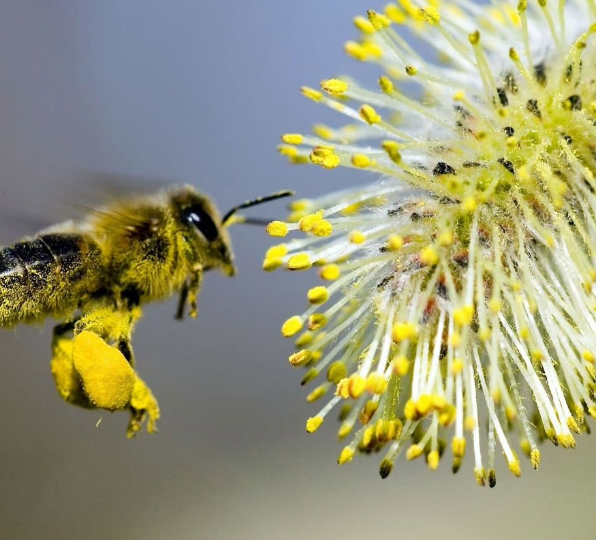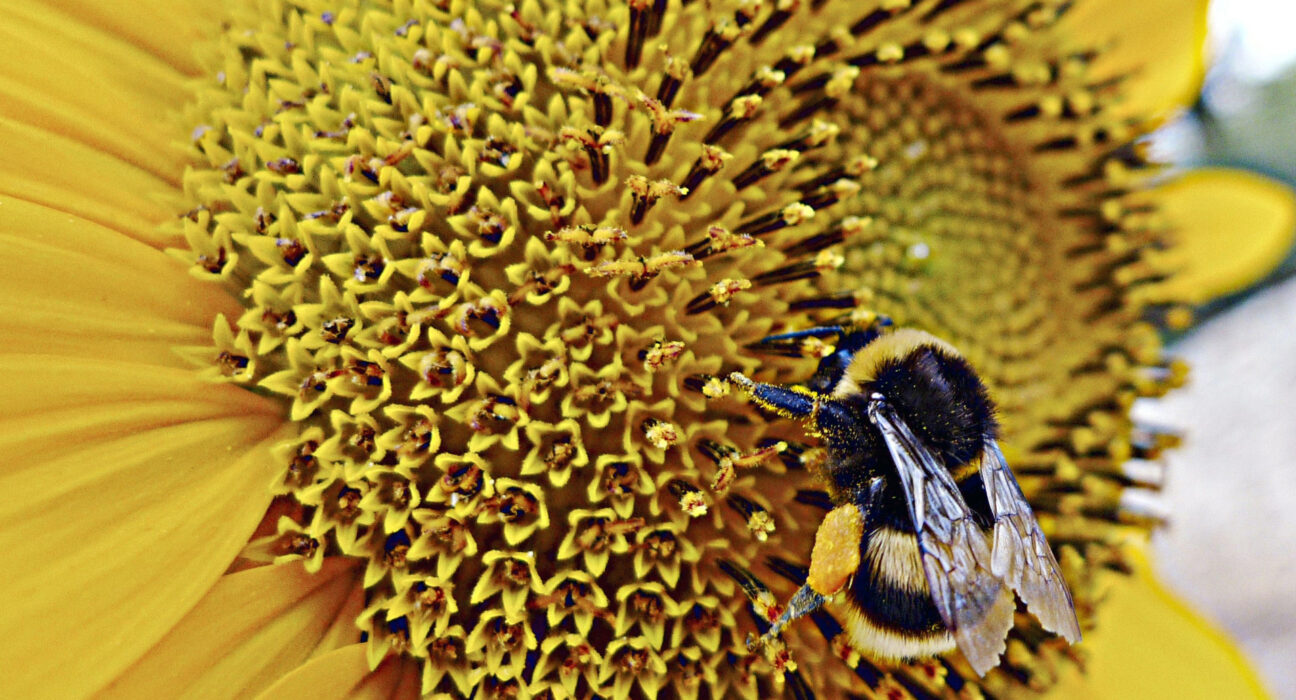Introduction:
Incredible creatures, honey bees play a crucial role in pollination, maintaining the balance of nature and guaranteeing the growth of various plants. They are often underestimated despite their vital role in our ecosystem. This blog post will go over ten astounding facts about honey bees that will show off both their remarkable habits and the significance of their pollination work.
1. Dance Language:
The waggle dance is an amazing form of communication found in the fascinating world of honey bees. The bees use this elaborate dance as a sophisticated language to communicate important information among themselves in the hive. When a forager returns bearing word of a plentiful food supply, it does a particular dance, using precise gestures and rhythms. The direction and distance to the found resource are indicated by the waggle’s length and angle. This dance, which attests to the extraordinary intelligence found in the hive, guarantees effective cooperation as other worker bees decipher and respond to the information provided, all of which contribute to the colony’s overall well-being.
2. Incredible Navigation Skills:
It is an amazing feat of navigation in the complex world of honey bees. These tiny pilots demonstrate remarkable abilities, using heavenly signals to determine their path. During the day, honey bees use the sun as a very important point of reference to determine direction very accurately. As the light fades, their sense of direction remains unaffected. These hardworking insects show an innate ability to adapt their guidance system by switching to relying on the Earth’s magnetic field when the sun is obscured. This dual-mode navigation, which combines magnetic sensitivity and solar orientation, allows honey bees to precisely return to the hive with nectar-filled cargo, allowing them to forage over large areas with efficiency. This is evidence of their amazing strategies for survival in the natural world.
3. Impressive Pollination Power:
The diligent honey bee becomes a pollination powerhouse, having a significant effect on the world food chain. Honey bees accidentally spread pollen from flower to flower due to their insatiable appetite for nectar, which is an essential process for plant reproduction. These hardworking pollinators do much more than just produce honey; they are vital to the cultivation of innumerable crops that provide a large amount of the world’s food supply. Honey bees are essential to the growth of fruits, vegetables, and nuts in orchards and fields alike. The abundance of nature’s harvest would be reduced without their tireless pollination dance, highlighting the crucial role these buzzing marvels play in maintaining our food chain.
4. Life in the Hive:
A beehive’s interior reveals a wonderfully structured community in which each member contributes uniquely to the hive’s overall survival. The foundation of the colony, worker bees work nonstop to maintain the hive, nurse the brood, and forage. Male bees called drones are only in the world to mate with a queen when she is on her wedding flight. The matriarch of the hive, the queen bee, is in charge and is in charge of laying eggs and keeping the colony cohesive. This well-planned allocation of tasks generates a pleasing collective energy, maximizing productivity and guaranteeing the hive’s well-being. The intricate details of hive life reveal a well-balanced social structure in which every bee’s input is crucial to the colony’s prosperity.
5.Hardworking Foragers:
The worker bee’s role as a persistent forager is paramount in the busy world of honey bees. A worker bee, who works incredibly hard on its daily odyssey, visiting thousands of flowers with purpose and accuracy. With their wings beating rhythmically, these industrious foragers traverse vast floral landscapes in an unceasing pursuit of nectar and pollen. Carrying valuable cargo, they make their way back to the hive, where their loot serves as the colony’s lifeblood. This never-ending foraging dance is more than just a chore; it’s an essential ritual that ensures the honey bee colony’s survival and growth, highlighting the vital role that their tireless efforts play in nature’s intricate web.


6. Royal Jelly and Bee Bread:
The intriguing methods of making royal jelly and bee bread reveal the complexities of honey bee nutrition. Future generations of the hive receive special treatment from worker bees because they secrete royal jelly, a nutrient-rich elixir that turns common larvae into queens. This wonder food, high in fatty acids, proteins, and vitamins, plans a queen bee’s magnificent development. To go with this magnificent gift is “bee bread,” which is a powerful concoction of pollen, nectar, and enzymes that worker bees painstakingly prepare. This combination of high protein acts as a vital food source for the whole colony, providing the vigor and strength required for the hive to succeed over the long term.
7.Intricate Hive Architecture:
The hexagonal cells that make up the beehive, a marvel of natural engineering, reveal its architectural brilliance in a way that is both aesthetically pleasing and cleverly functional. Every hexagon demonstrates how the hive skillfully uses its available space to combine form and function in a pleasing way. The hexagonal shape is purposeful; it optimizes storage capacity while maintaining structural integrity, giving honey bees the best possible storage space for their valuable stores of pollen and honey. Furthermore, these hexagons allow for efficient growth and development by acting as nurturing cradles for the brood.
8. Mysterious Colony Collapse Disorder:
Vital pollinators face the threat of Colony Collapse Disorder (CCD), devastating honey bee populations as worker bees mysteriously vanish. Beyond the beehive, the effects of CCD reverberate through agricultural ecosystems, posing grave threats to the world’s food production. The enigmatic causes of CCD continue to involve pathogens, pesticides, and habitat loss. Understanding and addressing the enigmatic bee decline is crucial, given its potential impacts on biodiversity, agriculture, and environmental equilibrium.
9. Extraordinary Lifespan of the Queen:
The queen bee is a marvel of longevity in the fleeting dance of life within a honey bee colony. And although her faithful worker bees only live a few weeks, the queen outlives her kin, living for several years. Attributed to her childhood royal treatment—a diet abundant in royal jelly—the queen bee boasts an unusually long lifespan. Rich in proteins, vitamins, and fatty acids, royal jelly plays pivotal role in shaping honey bees’ intricate, enduring life cycle.
10. Global Impact:
Global bee decline imperils not just hives but food security and biodiversity. Vital pollinators, honey bees sustain ecosystems and agriculture. Gaining insight into and appreciation for the complex world of honey bees serves as a rallying cry for conservation initiatives. Proactive steps are essential to protecting these hardworking insects, from reducing the use of pesticides to maintaining natural habitats. Protecting honey bees is an investment in ecosystem resilience and global food security, extending beyond mere conservation efforts.
Conclusion:
Honey bees, beyond fascination, hold a pivotal role in preserving our delicate ecosystem. Understanding their complex lives and their immense influence on our planet involves exploring the vital process of pollination. Exploring these facts unveils the profound impact of honey bees on our environment’s intricate balance.












